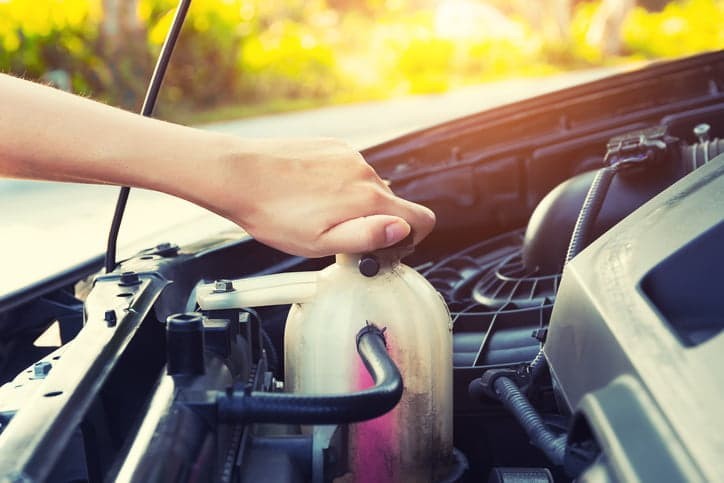Coolant boiling in your car’s engine is a serious issue that indicates a problem with your cooling system. Understanding why this happens is crucial to prevent costly engine damage. This guide explains the common causes of coolant boiling, the symptoms to watch out for, and how to address the problem.
A car’s cooling system operates under pressure to maintain the optimal engine temperature. A sealed system of hoses circulates coolant/antifreeze, preventing it from reaching its boiling point. However, when air enters this system or pressure is lost, the boiling point of the coolant decreases, potentially leading to overheating and boiling.
Common Causes of Coolant Boiling
Several factors can contribute to coolant boiling. Let’s explore the most frequent culprits:
Blown Head Gasket
A blown head gasket is a common and severe cause of coolant boiling. The head gasket seals the combustion chambers from the cooling passages. When it fails, combustion gases leak into the cooling system, pressurizing it and introducing air. This leads to bubbling in the coolant reservoir, often mistaken for boiling, and can cause rapid overheating. Symptoms include white smoke from the exhaust, overheating, and a milky oil appearance.
Faulty Cooling System Pressure Cap
The pressure cap is designed to maintain the correct pressure within the cooling system. A faulty cap can’t regulate pressure properly, allowing coolant to boil at a lower temperature. It may also allow air to enter the system, further exacerbating the problem. Look for bubbling around the cap seal or in the coolant reservoir.
Low Coolant Level
Insufficient coolant reduces the system’s ability to absorb heat. This puts extra stress on the remaining coolant, making it more likely to boil. Regularly check your coolant level and top it off as needed.
Air Pockets in the Cooling System
Air trapped in the cooling system can interfere with coolant circulation, leading to hot spots and boiling. This often occurs after a coolant flush if the system isn’t properly bled of air. Symptoms include bubbling in the reservoir and higher than normal operating temperatures.
Clogged Radiator
A clogged radiator restricts coolant flow, reducing heat dissipation. This can cause the coolant to overheat and boil. Regularly inspect your radiator for debris and ensure it’s clean.
Faulty Thermostat
A malfunctioning thermostat can prevent the cooling system from engaging properly, leading to overheating and boiling coolant. If your engine consistently runs hot, a faulty thermostat might be the culprit.
Water Pump Failure
The water pump circulates coolant through the engine. If it fails, coolant circulation stops, causing rapid overheating and boiling.
What to Do if Your Coolant is Boiling
If you notice your coolant boiling, pull over immediately and turn off the engine. Continuing to drive can cause severe engine damage. Allow the engine to cool completely before checking the coolant level. Never open a hot radiator cap, as pressurized hot coolant can cause serious burns.
Diagnosing the exact cause of coolant boiling often requires professional expertise. A mechanic can perform pressure tests, inspect components, and pinpoint the problem.
Preventing Coolant Boiling
Regular maintenance is key to preventing coolant boiling. This includes:
- Regularly checking coolant levels and topping them off as needed.
- Inspecting hoses and connections for leaks or damage.
- Flushing and replacing coolant according to the manufacturer’s recommendations.
- Having the cooling system pressure tested periodically.
- Addressing any overheating issues promptly.
By understanding the causes of coolant boiling and taking preventive measures, you can protect your engine from serious damage and ensure your car runs smoothly.

